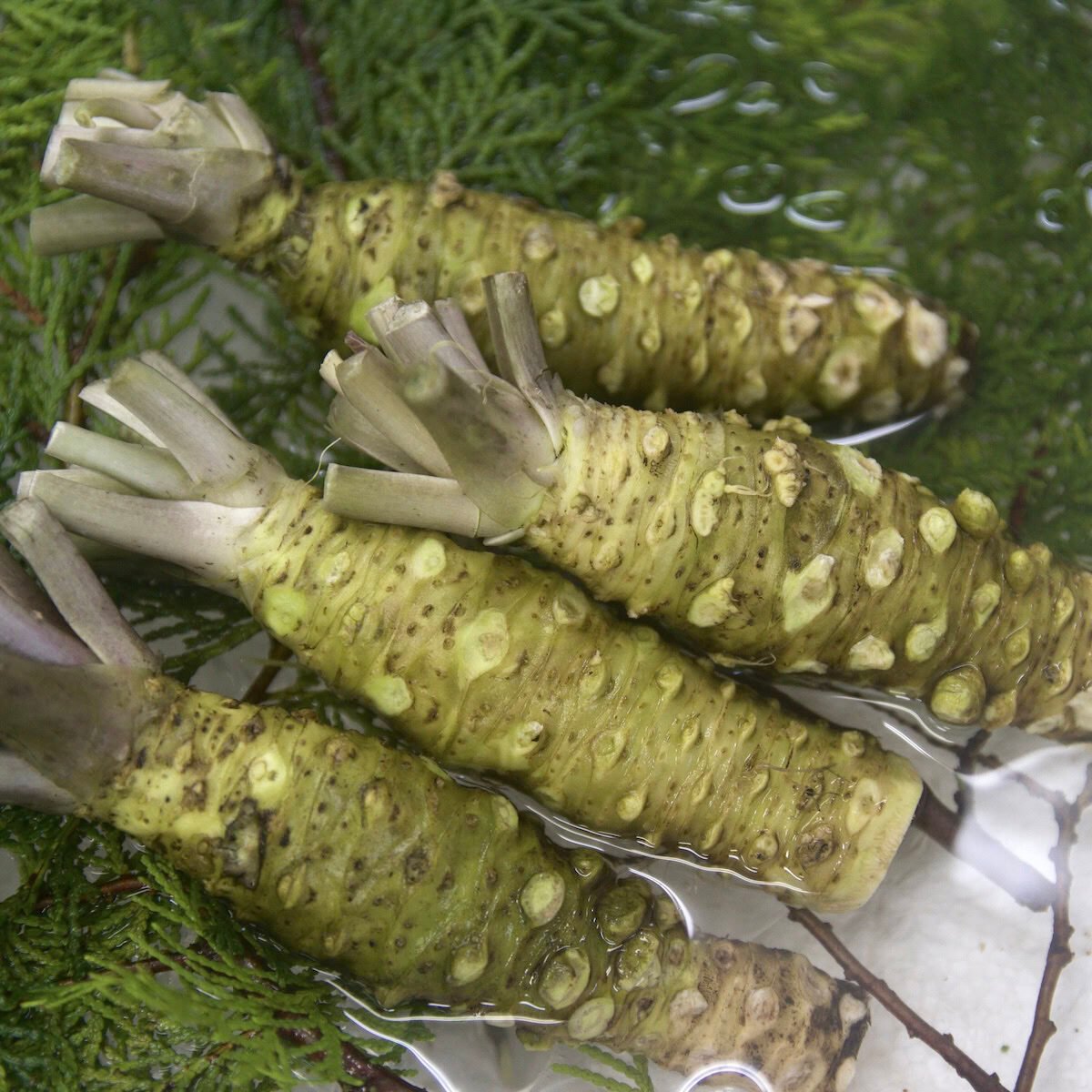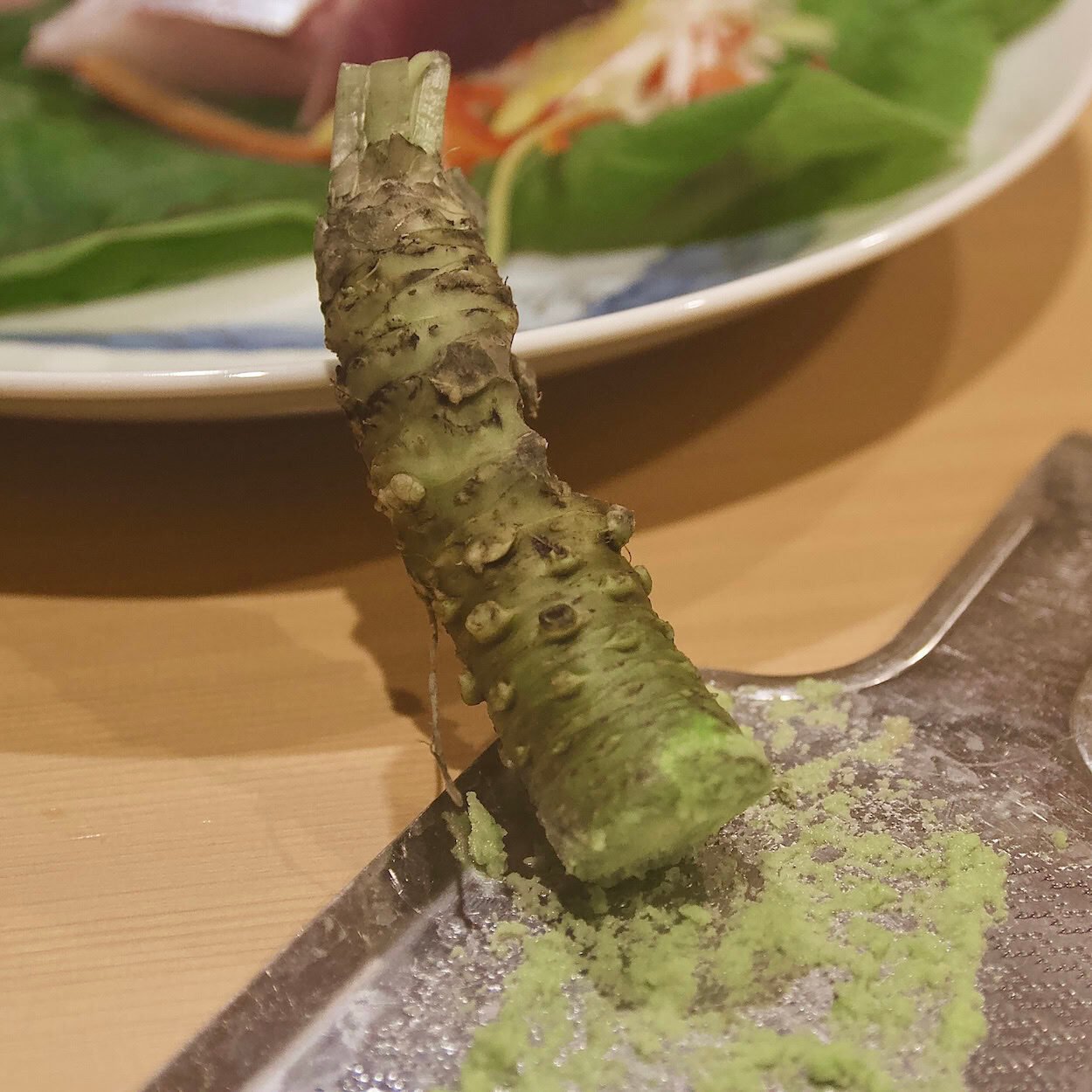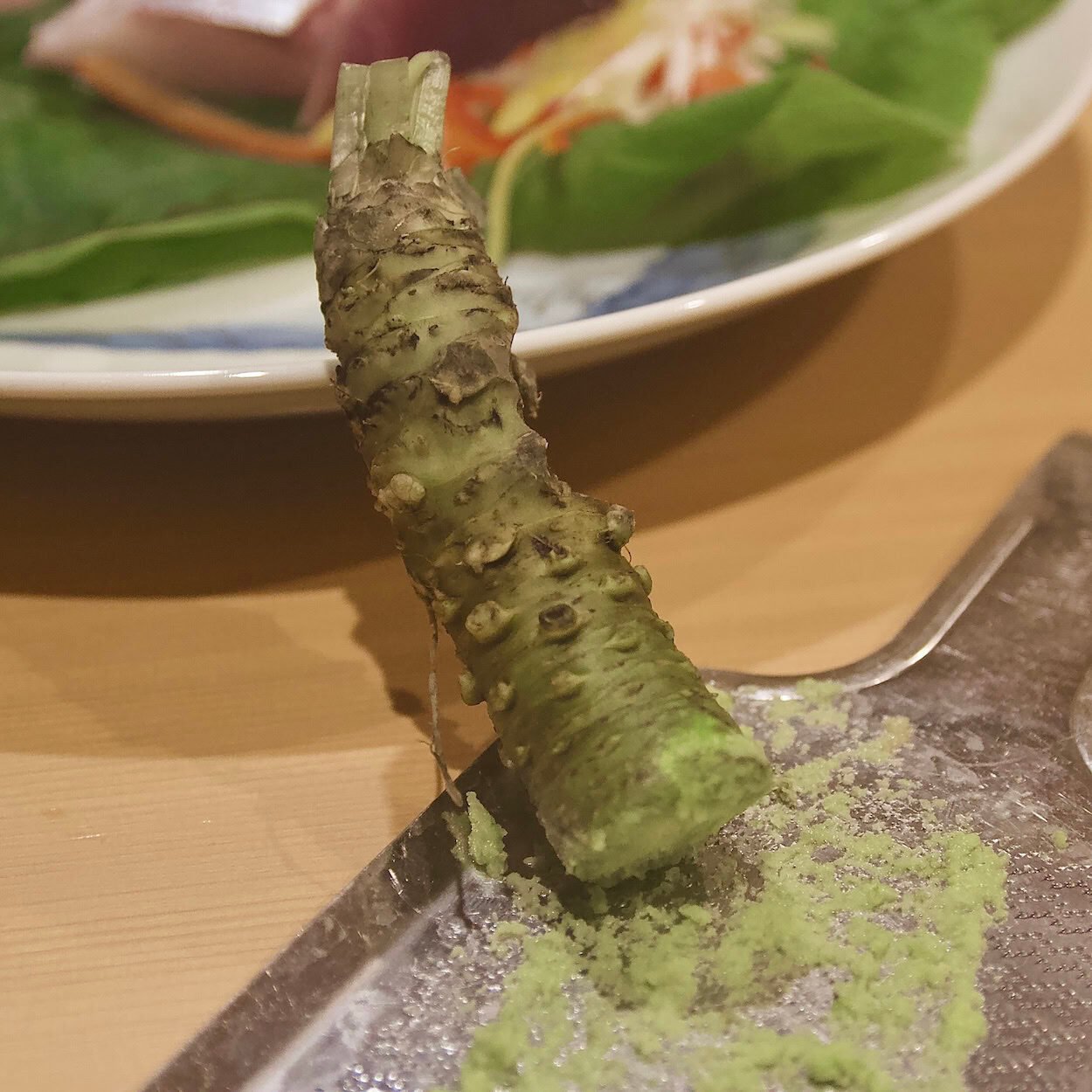Wasabi

REGION OF ORIGIN
Japan. Wasabi's roots are firmly planted in Japan. However, recent discoveries have revealed small pockets of wasabi growing on the Korean Peninsula as well, although much less abundantly. This suggests a potentially shared origin story for wasabi, with its cultivation and culinary innovation flourishing solely in Japan.
PART & COLOR
Fresh wasabi rhizomes and wasabi paste have a blend of pale green hues. However, most "wasabi" isn't real wasabi, but rather a mixture of mustard, horseradish, and green food coloring, resulting in a much darker green. Authentic wasabi rhizomes are either freshly grated or dried and ground into a powder that can be rehydrated into a paste, although less full-flavored. The bright green leaves can also be pickled or eaten fresh as a bitter salad green.
HARVEST
Wasabi is harvested year round, but tends to be more pungent in the colder months (November to February). Learn more about the production of wasabi.

FLAVOR & AROMA PROFILE
The flavor of freshly grated wasabi is beautifully complex: hot with a bright, natural sweetness. An earthy aroma with hints of fresh grass round out its nuanced flavor. Unlike most spices that rest solely on the tongue and tend to linger, wasabi's heat travels through the nose, opening your sinuses with a sharp pungency that swiftly fades away. Its distinctive nasal tingling invigorates and refreshes you as its subtly biting taste dances on the tongue, elevating every flavor of the dish. Rolling it around in your mouth accentuates this effect.
CULINARY USES
In excess, wasabi's fierce heat can overpower its accompaniment—and your sinuses. It is meant to accentuate flavors, not overwhelm them, so less is more. Fresh rhizomes should be grated on an as-needed basis because the volatile oils reach peak spiciness after a couple minutes of being released and then gradually dissipate.
Wasabi famously unlocks the delicate notes of raw fish and cuts through the richness of soy sauce, making it essential to the sushi experience. It also amplifies the umami of wagyu and adds an intriguing kick to creamy dips and spreads. Wasabi lends itself perfectly to cold noodle dishes as well, such as udon and soba.



